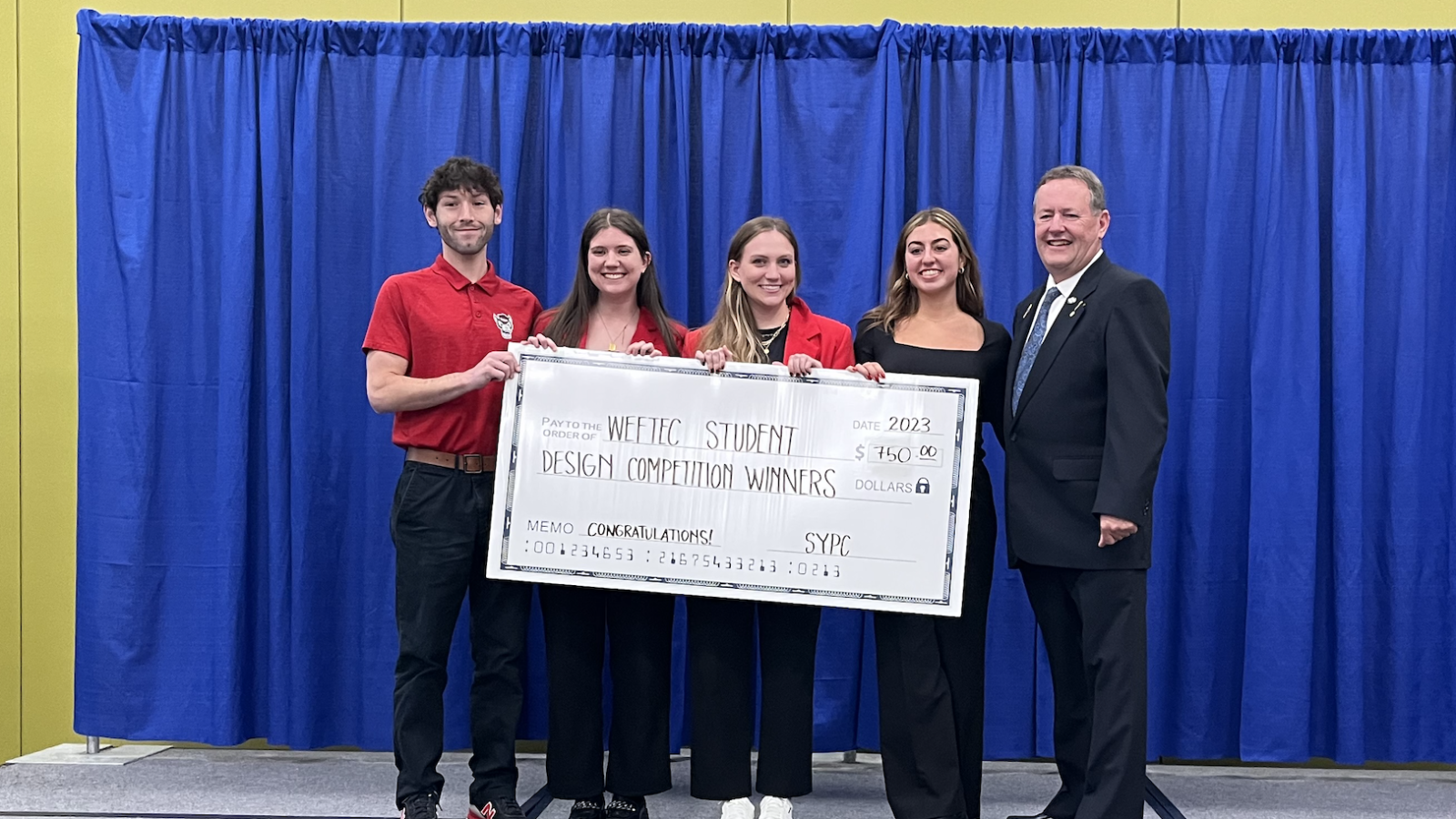The Environmental Engineering Project CE 481 Senior Design Team won fourth place in the Water Environment Federation (WEF) Student Design Competition on October 1 in Chicago.
The design competition is intended to promote “real world” design experience for students interested in pursuing an education or career in the water and wastewater fields. Teams are tasked with evaluating alternatives, developing a comprehensive design, and presenting a solution that meets the requirements of a socially relevant problem statement. The competition included 27 teams from 25 schools representing 20 member associations and three countries.
“The WEF Student Design Competitions were developed to provide a forum to showcase top students who will be future water quality professionals,” according to WEF. “The competitions provide university students with an opportunity to highlight their skills and share their enthusiasm for the water environment while addressing real-world design challenges.”
The NC State team included Elizabeth Bates, Sydney Crisanti, Mitch Edney, and Hailee Sicknick. Glenn E. and Phyllis J. Futrell Distinguished Professor Francis de los Reyes and Z. Michael Wang, vice president of Hazen and Sawyer, served as mentors. The team presented a design for the Biosolids Infrastructure Expansion for the Manchester Creek Wastewater Facility in Rock Hill, South Carolina. The main goal for the facility was to expand the biosolid handling infrastructure to keep up with the city’s population growth while focusing on implementing thermal drying and meeting Class A biosolids standards.
“The team put in a lot of hours and effort into their design, which is a real planned project for the utility,” de Los Reyes said. “Manchester Creek WWTP needs to upgrade their biosolids treatment, and the NC State team produced a realistic, well thought-out option, including an assessment of sustainability and community impact.”
The team assessed the current biosolids thickening capacity with an increase of flow from 30 million gallons per day (MGD) to 50 MGD, chose the biosolids dryer and pelletized, designed the biosolids building and storage silos, prepared cost estimates and project schedules, and performed an ENVISION assessment.
“I was proud of how the team worked hard to make their presentation really clear,” de Los Reyes said. “These competitions are not just about the actual engineering design, but how you communicate your work to professionals. The NC State team really did shine in how they presented — clearly and convincingly.”

